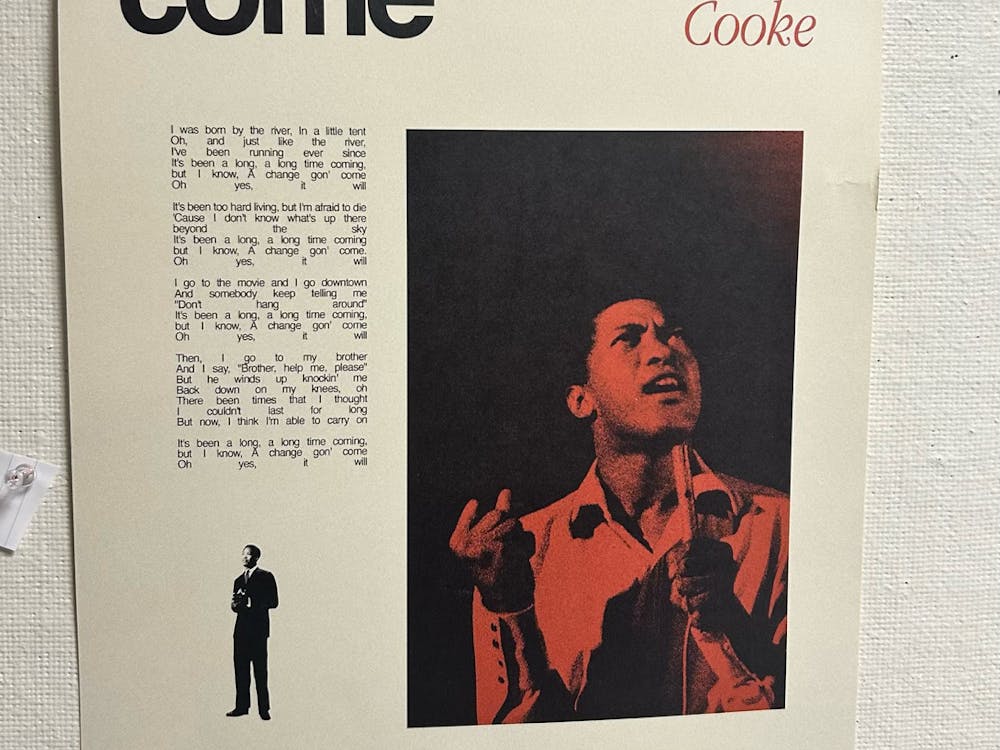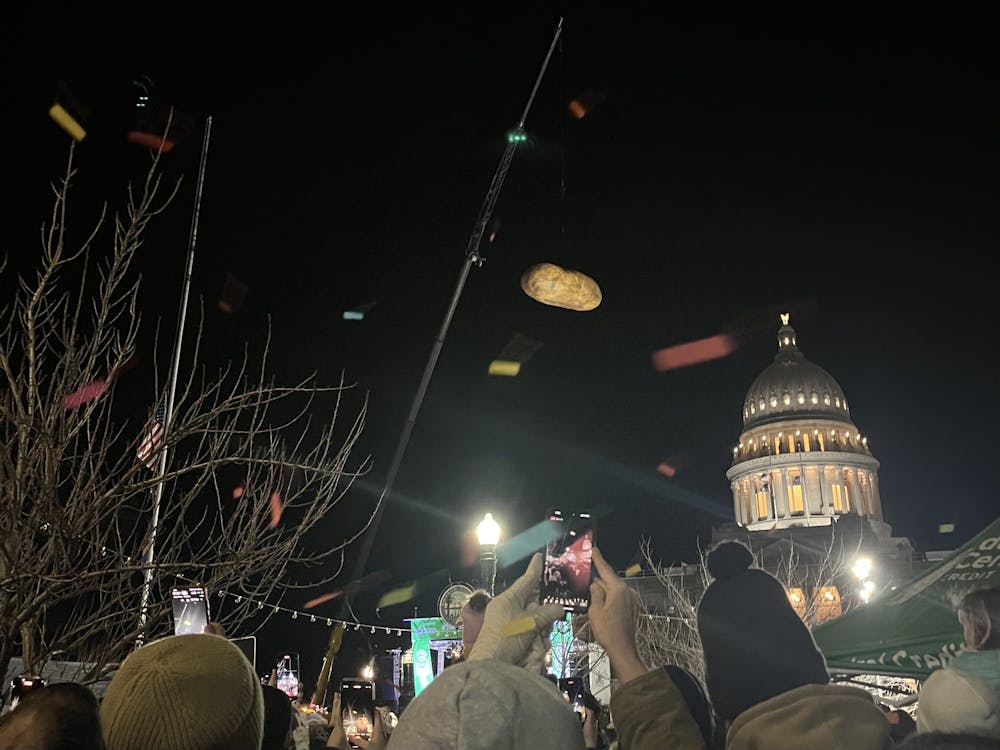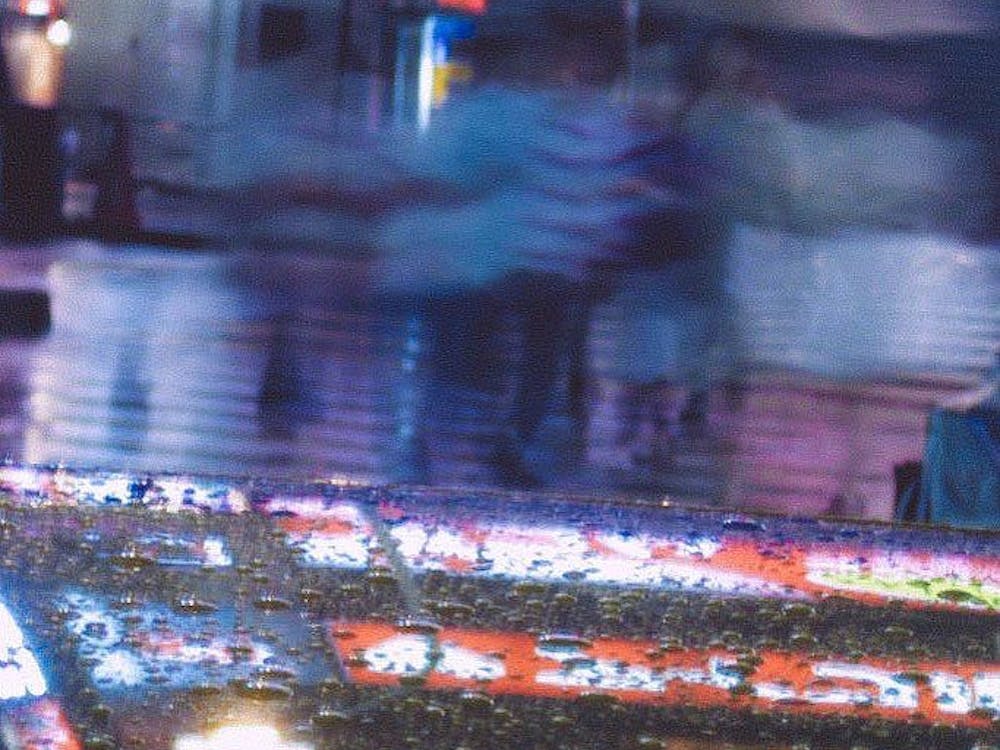André: The bottle is ubiquitous on and around the Hopkins campus, not just for its low price but also for its easy-to-drink sweetness. This is probably one of the cheaper bottles you can get at Eddie’s, and it comes in a variety of fun and fruity flavors. In all honesty, though, André is essentially juice.
Over time, André has come to repulse me; I don’t think I could even finish a glass. Maybe this is my aging 22-year-old tastebuds, or maybe I’ve become a bit of a wine snob. Either way, I’ve moved on from André (and moscato in general).
If you still swear by this sparkling staple, go off. It’s ridiculous to shame anyone for their personal taste; however, if you always gravitate toward that familiar corner of Eddie’s, maybe consider branching out and trying some other more interesting wines.
Not sure where or how to start? I’ve got you covered with some tips for wine shopping and a short list of bottles under $20 you can find at Eddie’s Liquors on St. Paul Street.
I need to preface this advice with a disclaimer that I am absolutely NOT a sommelier. My taste buds have ~evolved~ but aren’t THAT mature; I still can usually only do one glass of red wine, though I’ve been slowly exploring that realm of drink. And there’s nothing wrong with this: Only liking white wine doesn’t make you basic or uncultured. Taste is literally subjective so drink what you like!!
How do I pick a bottle of wine off the shelf? Well, according to the many sommelier YouTube reviews I’ve watched, you can tell a good wine by reading the label. That does NOT mean you pick the prettiest or most fancy-looking one, though. The most important factors that reflect the quality of a wine are:
- Origin. (Specific or general place? Single or multi-origin?) The best wines are usually single-origin and include lots of specific details about the location where the grapes were grown. For example, a bottle that indicates a specific address is probably better than the one that just says “California.”
- Type (aka grapes). Does the bottle say “white wine” or “pinot gris”? Is it a “house blend” or sourced from a specific vineyard/region? Neither is bad, but I avoid buying bottles with little specificity.
- Notes. A good label will include flavor notes of the wine, and it’s even better if it explains how some part of its process gives that note. In the case of Vinho Verde, the wine isn’t aged long, so it retains a lot of minerality.
- Dry vs. sweet (and alcohol content). More alcohol generally means the wine will taste drier. Consider, for example, André’s ~6% alcohol by volume (abv) and very sweet flavor.
I know pretty bottles are hard to resist, and it’s always fun to try something new, but if you’re looking for the highest quality wine for your buck, these tips are your best bet.
Several of the great wines below are certified by viticulture commissions, organizations committed to preserving the culture of wine, from the cultivation to the harvest of grapes. These often have some regional significance; for example, the Vinho Verde below is a Portuguese varietal, and the Malbec is from the famous Uco Valley in Argentina.
Broadbent Vinho Verde
Vinho Verde, and this brand specifically, is the wine I buy most. I suppose that this sparkling white is mineral-y and bright (wine words) — and at $10 a bottle, it really can’t be beat. Perfect for relaxing or sipping with a meal, it’s less sweet at 9% abv, so you probably won’t feel too bad the day after. Vinho Verde is literally the epitome of refreshing and crisp. The label mentions a specific origin of Gaia, Portugal and claims to partner with family-owned wineries!
Bonus: The aesthetic of the bottle is beautiful. I’m using one as a vase in my apartment right now! All around MVB (Most Valuable Bottle).
South African Old Vine Chenin Blanc (2018)
This was the most detailed and specific label I found in a brief perusal of Eddie’s white wine. The label is highly detailed, including the producers’ names and address as well as a description of how the Swartland climate impacts the wine’s taste. It’s sustainably produced using yeasts native to the region, so clearly someone cared a lot about creating this wine. That’s the greatest lesson from the origin and specificity of the label: special attention and intention are behind this bottle.
The flavor is earthy and bright but not particularly citrusy or fruity; it lingers and builds on the tongue, changing textures in the mouth. I feel like this wine taught me what fancy people mean when they say wine is “complex.” I highly recommend checking this $14 bottle out if you want to feel bougie and refined.
Rosé, from $9 to $18
I’m a huge fan of rosé, though I’m honestly not sure I could name a favorite. For the sake of this article, I tried two bottles from Eddie’s of different price points. The cheaper bottle, Snoop Dogg’s Cali Rosé with 19 Crimes, is a pretty solid standard pink wine. The flavor is relatively neutral, a sort of Goldilocks between sweet and dry, and my boyfriend and I detected notes of cherry, raspberry and maybe red apple (notes are hard, okay?). Beautiful in color, this bottle is pretty fun because it features Snoop’s face (try holding your phone camera up to it for a fun surprise).
The beautiful packaging of the pricier wine, Studio by Miraval, is admittedly what drew me to the bottle originally. And to be honest, I should have perhaps dug a little deeper, as there is little description on the label. Does this fact negate how good the wine tastes and looks? Nope. The elongated neck and wide base of the minimalistic bottle house the pale blush wine inside.
I was pleasantly surprised that it managed to be so crisp and dry yet not particularly bitter. When the wine first touches the tongue, you expect sweetness to follow. That’s not the case: The flavor is dry and subtle. It tastes mineral-y and bright with some notes of citrus and raspberry. With 13% alcohol content, this dry wine is one I’ll definitely be buying again. Though great on its own, I would pair this rosé with a creamy, cheesy pasta dish or white fish with a lemony sauce.
Chakana Estate Selection Malbec (2019)
So this is the only red wine on this list because Malbec is the only type of red wine I ever order or buy. A dear friend from Argentina introduced me to this dry red early in my wine “career,” but it has held its place as my favorite even as I branched out to other varieties. The staff at Eddie’s recommended this specific 2019 vintage estate selection from the Uco Valley in Mendoza, Argentina — a highland region known for its exceptional Malbec.
According to the bottle, “shallow, chalky soils together with a mild micro-climate lend textured elegance and freshness to the wine,” which sounds right to me. The flavor is very dry with notes of dark cherry and plum. At 13.5% abv, the high tannins give it a smoky bitterness (I think). This bold, rich wine pairs perfectly with steak or lamb as well as other richly flavored, savory dishes. At $18 it makes an excellent gift or contribution to a dinner party!
Tango Peach from Boordy Vineyards
Sangria is always a good choice, and the possibilities are endless! This is one of the only ways I enjoy red wine — a full-bodied mixture of booze and fruit — but white wine sangrias are equally as refreshing and delicious.
For this article I wanted to try a local option. Maryland’s own Boordy Vineyards has a delicious line of sangrias called Sweetland Cellars, and for this article I decided to try the Tango Peach flavor. Peach is definitely the dominant note, with maybe a hint of citrus? It’s basically a more refined version of André Peach Moscato (and higher alcohol content — proceed cautiously). At only around $10, this is definitely worth a try, but this specific flavor is a bit too sweet for my personal taste. I love other wines from Boordy’s Chesapeake Icons line and Landmark Series wines, which can also be found at Eddie’s.





